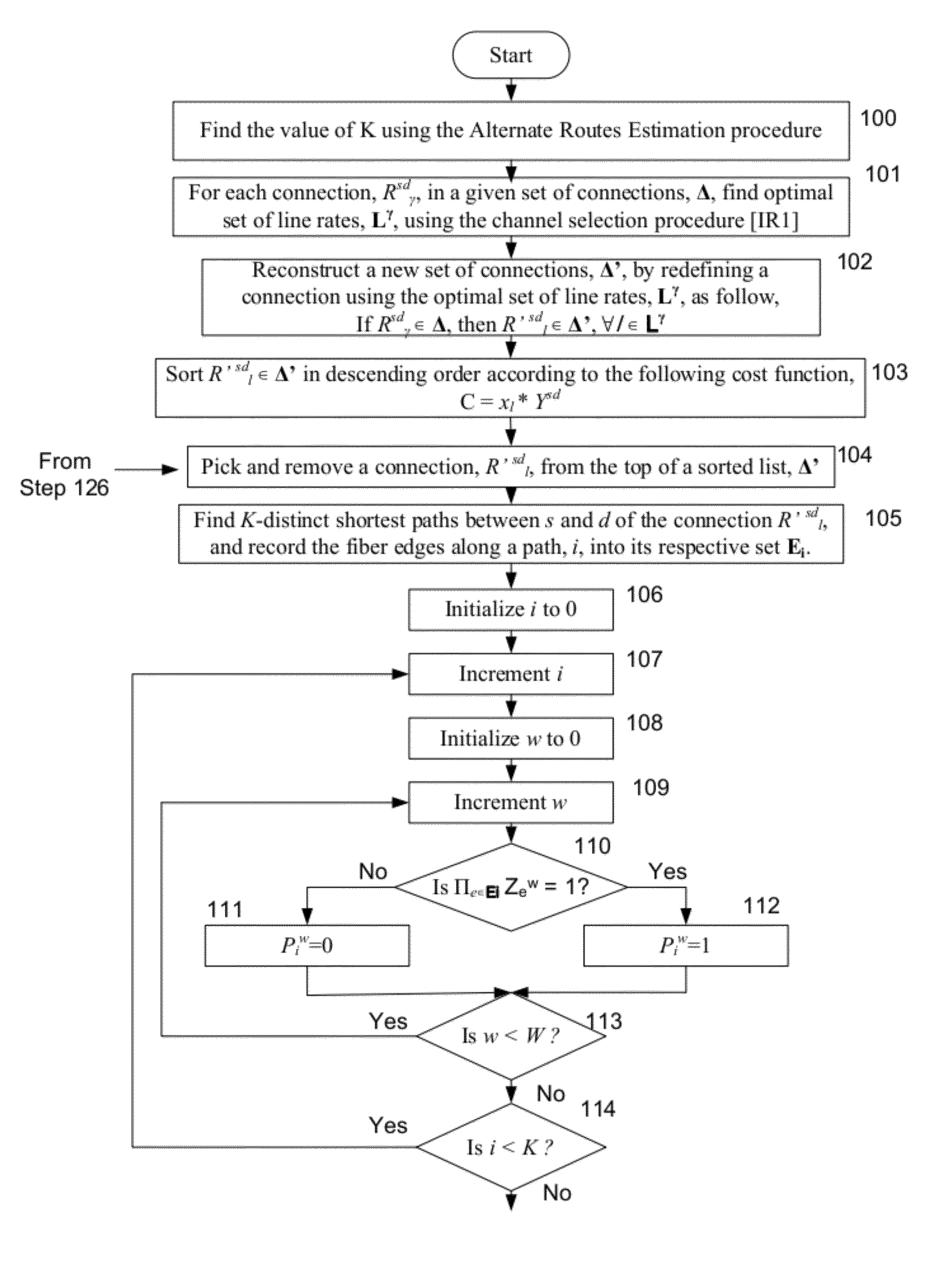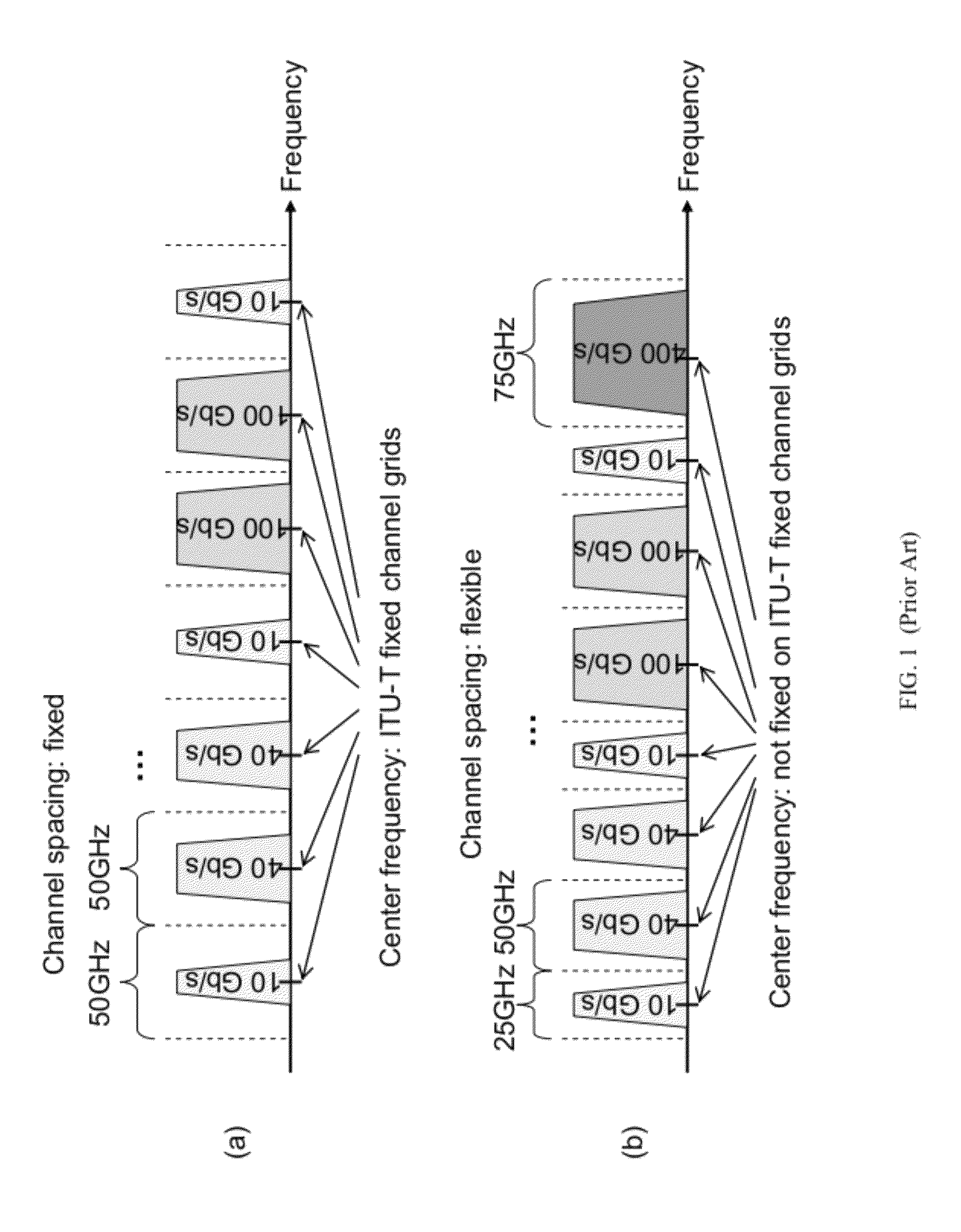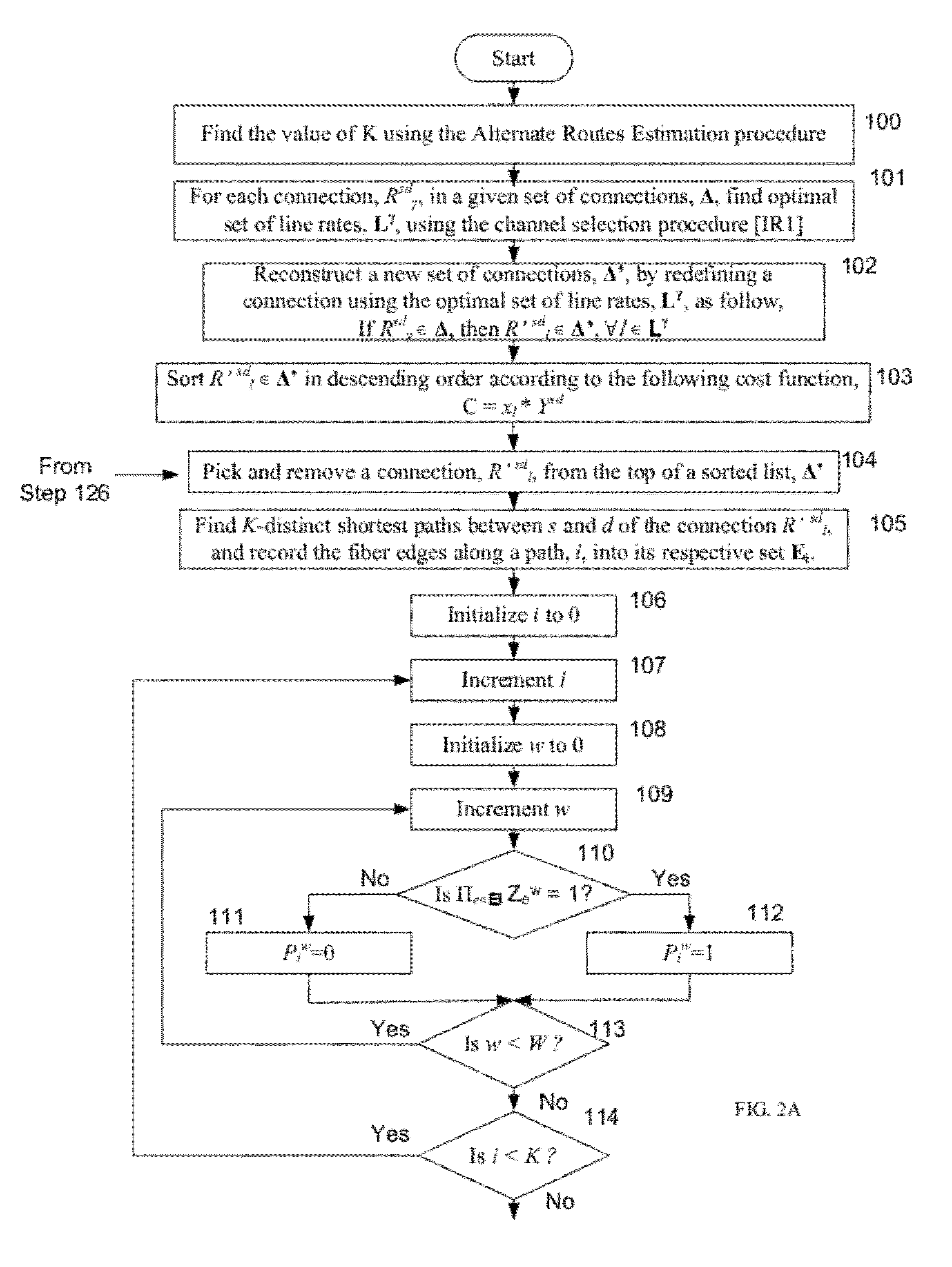K-alternate channel selection for the routing, wavelength assignment and spectrum allocation in flexible optical WDM networks
a flexible optical wdm network and channel selection technology, applied in the field of optical communication, can solve the problems of insufficient fixed spectrum assigned to channels in fixed grid networks, inapplicability of existing solutions for rwa problems to rwsa problems, and insufficient spectrum efficiency for each line rate, so as to reduce the time required and marginally improve the quality of solutions
- Summary
- Abstract
- Description
- Claims
- Application Information
AI Technical Summary
Benefits of technology
Problems solved by technology
Method used
Image
Examples
Embodiment Construction
[0017]The present invention is directed to an efficient procedure to solve the RWSA problem, namely K-alternate channel selection procedure, which reduces the time required to solve the RWSA problem significantly with only marginal degradation in solution quality. With the inventive technique the required time to solve the RWSA problem increases polynomially using the inventive K-alternate channel selection procedure, rather than exponentially with the system size. The inventive efficient K-alternative channel selection procedure that can perform routing, wavelength assignment and spectrum allocation for any given network setting with optimum spectrum allocation while not requiring time consuming exhaustive search.
[0018]We first introduce some terminologies in order to explain the K-alternate channel selection procedure. In this method, we assume that the given spectrum is discretized in the frequency domain in order to reduce the complexity of the RWSA problem. The smallest unit of...
PUM
 Login to View More
Login to View More Abstract
Description
Claims
Application Information
 Login to View More
Login to View More - R&D
- Intellectual Property
- Life Sciences
- Materials
- Tech Scout
- Unparalleled Data Quality
- Higher Quality Content
- 60% Fewer Hallucinations
Browse by: Latest US Patents, China's latest patents, Technical Efficacy Thesaurus, Application Domain, Technology Topic, Popular Technical Reports.
© 2025 PatSnap. All rights reserved.Legal|Privacy policy|Modern Slavery Act Transparency Statement|Sitemap|About US| Contact US: help@patsnap.com



